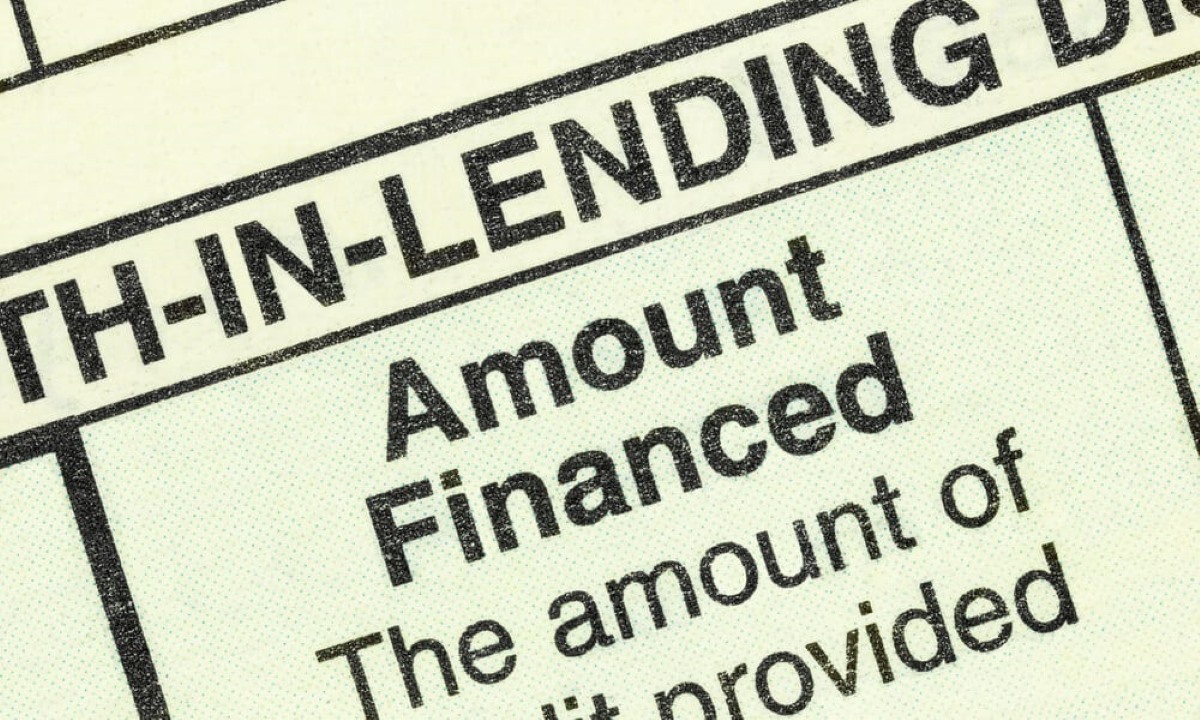Home>Finance>What Is The Grace Period For Retirement Withdrawals To An IRA?


Finance
What Is The Grace Period For Retirement Withdrawals To An IRA?
Published: February 19, 2024
Learn about the grace period for retirement withdrawals to an IRA and how it impacts your finances. Understand the implications for managing your retirement savings effectively.
(Many of the links in this article redirect to a specific reviewed product. Your purchase of these products through affiliate links helps to generate commission for LiveWell, at no extra cost. Learn more)
Table of Contents
**
Introduction
**
Retirement planning is a crucial aspect of financial management, and Individual Retirement Accounts (IRAs) serve as a cornerstone for many individuals’ long-term savings strategies. As people approach retirement age, they often contemplate the timing of their IRA withdrawals, seeking to maximize their savings while adhering to the regulations governing these accounts. Understanding the grace period for retirement withdrawals to an IRA is essential for making informed financial decisions during this pivotal stage of life.
In this comprehensive guide, we will delve into the concept of the grace period for retirement withdrawals, explore the rules and regulations governing IRA distributions, and discuss the benefits and considerations associated with the grace period. Additionally, we will provide insights on how individuals can leverage this grace period to optimize their retirement savings and achieve their financial objectives.
Whether you are approaching retirement age or simply seeking to enhance your knowledge of retirement planning, this article aims to equip you with the essential information needed to navigate the complexities of IRA withdrawals and make well-informed decisions that align with your long-term financial goals.
**
Understanding the Grace Period for Retirement Withdrawals
**
As individuals reach the age of 72, they are typically required to start taking minimum distributions from their traditional IRAs, a rule enforced by the IRS. This mandatory distribution is known as the required minimum distribution (RMD). However, the IRS offers a grace period for the first RMD, allowing individuals to defer the withdrawal until April 1st of the year following the year in which they turn 72. This grace period provides a valuable opportunity for retirees to strategically plan their initial IRA distributions and optimize their tax implications.
It’s important to note that while the grace period offers flexibility for the timing of the first RMD, subsequent distributions must be taken by December 31st of each year. Failing to adhere to the RMD requirements can result in significant tax penalties, emphasizing the importance of understanding and effectively utilizing the grace period.
During this grace period, individuals should carefully evaluate their financial circumstances, including their tax obligations and overall retirement income strategy. By leveraging this additional time, retirees can assess various factors such as their current tax bracket, potential sources of income, and any anticipated changes in their financial situation. This thorough assessment enables retirees to make informed decisions regarding the timing and amount of their initial IRA distribution, aligning with their broader financial objectives.
Understanding the nuances of the grace period empowers retirees to navigate the complexities of IRA withdrawals with confidence, ensuring compliance with IRS regulations while optimizing their retirement savings and tax efficiency.
**
Rules and Regulations for IRA Withdrawals
**
When it comes to IRA withdrawals, there are several rules and regulations that individuals must adhere to in order to avoid potential penalties and optimize their retirement savings. The IRS governs these regulations to ensure that IRAs are utilized for their intended purpose as vehicles for long-term retirement savings.
One of the key regulations pertains to the required minimum distribution (RMD), which mandates that individuals begin withdrawing a certain amount from their traditional IRAs once they reach the age of 72. The RMD amount is calculated based on the individual’s life expectancy and IRA balance, and it must be withdrawn annually to avoid substantial IRS penalties.
Additionally, individuals should be mindful of the early withdrawal penalties imposed by the IRS. Generally, withdrawals made before the age of 59½ are subject to a 10% early withdrawal penalty, unless an exception applies. These exceptions may include qualifying medical expenses, first-time home purchases, higher education expenses, or certain types of insurance premiums.
Furthermore, individuals should be aware of the tax implications associated with IRA withdrawals. Traditional IRA distributions are typically taxed as ordinary income, while Roth IRA distributions may be tax-free if certain conditions are met. By understanding the tax treatment of IRA withdrawals, individuals can strategically plan their distributions to minimize their tax burden and optimize their retirement income.
Moreover, individuals have the option to make qualified charitable distributions (QCDs) from their IRAs once they reach the age of 70½. These distributions allow individuals to donate funds directly to qualified charities, potentially reducing their taxable income while supporting charitable causes.
By familiarizing themselves with the rules and regulations governing IRA withdrawals, individuals can make informed decisions that align with their retirement objectives and ensure compliance with IRS guidelines, ultimately maximizing the benefits of their retirement savings.
**
Benefits and Considerations of the Grace Period
**
The grace period for retirement withdrawals to an IRA offers several benefits and considerations that can significantly impact retirees’ financial planning and tax management strategies. Understanding these advantages is essential for individuals seeking to optimize their retirement income and minimize tax implications.
One of the primary benefits of the grace period is the flexibility it provides in timing the initial required minimum distribution (RMD). By allowing individuals to defer their first RMD until April 1st of the year following the year in which they turn 72, the grace period enables retirees to strategically plan their withdrawals based on their current financial circumstances and tax considerations. This flexibility can be particularly advantageous for individuals who may benefit from delaying their RMD to minimize the impact on their tax bracket.
Furthermore, the grace period offers retirees the opportunity to assess their overall retirement income strategy and make informed decisions regarding the timing and amount of their initial IRA distribution. By carefully evaluating factors such as their tax bracket, other sources of income, and potential changes in their financial situation, retirees can optimize their RMD to align with their broader financial goals.
However, it’s important for retirees to consider the implications of deferring their first RMD within the grace period. While delaying the initial distribution may offer short-term tax advantages, it also means that two RMDs will be required in the following year, potentially impacting the individual’s tax bracket and overall tax liability. Therefore, retirees should weigh the benefits of the grace period against the potential tax implications of deferring their first RMD.
Additionally, retirees should be mindful of the deadline for taking the initial RMD within the grace period, as failure to do so can result in substantial IRS penalties. Understanding the rules and regulations surrounding the grace period is crucial for ensuring compliance and avoiding unnecessary penalties.
By carefully considering the benefits and implications of the grace period, retirees can make informed decisions that align with their long-term financial objectives, ultimately maximizing the benefits of their IRA savings while effectively managing their tax obligations.
**
How to Make the Most of the Grace Period
**
Effectively leveraging the grace period for retirement withdrawals to an IRA requires thoughtful planning and consideration of various financial factors. By taking strategic steps, retirees can maximize the benefits of the grace period and optimize their retirement income and tax efficiency.
One key consideration for making the most of the grace period is to assess the individual’s current tax situation. By evaluating their tax bracket and potential tax liabilities, retirees can determine whether deferring the initial RMD within the grace period aligns with their tax optimization goals. For individuals expecting a decrease in income or a change in their tax bracket in the following year, delaying the first RMD may offer significant tax advantages.
Furthermore, retirees should consider their overall retirement income strategy and the impact of IRA distributions on their financial plan. By evaluating other sources of income, such as pensions, Social Security benefits, or investment earnings, individuals can strategically plan their IRA withdrawals to minimize the collective tax burden and ensure a sustainable income stream throughout retirement.
It’s also important for retirees to stay informed about the IRS regulations and deadlines associated with the grace period. By understanding the rules governing the timing and amount of the initial RMD, individuals can avoid potential penalties and ensure compliance with the IRS guidelines. Seeking guidance from financial advisors or tax professionals can provide valuable insights into navigating the complexities of IRA withdrawals and maximizing the benefits of the grace period.
Moreover, retirees may explore the option of utilizing qualified charitable distributions (QCDs) from their IRAs as a tax-efficient strategy during the grace period. By donating funds directly to qualified charities, individuals can potentially reduce their taxable income while supporting charitable causes, offering a tax-efficient approach to fulfilling their RMD obligations.
By carefully evaluating their tax situation, considering their overall retirement income strategy, staying informed about IRS regulations, and exploring tax-efficient strategies such as QCDs, retirees can make the most of the grace period and optimize their IRA withdrawals to align with their long-term financial goals.
**
Conclusion
**
As individuals approach the age of 72 and prepare to take required minimum distributions from their traditional IRAs, understanding the grace period for retirement withdrawals is paramount for informed financial decision-making. The grace period offers retirees a valuable opportunity to strategically plan their initial RMD and optimize their retirement income and tax efficiency.
By comprehending the nuances of the grace period and the rules governing IRA withdrawals, individuals can navigate the complexities of retirement planning with confidence. The flexibility provided by the grace period empowers retirees to assess their financial circumstances, evaluate their tax obligations, and make informed decisions regarding the timing and amount of their initial IRA distribution.
Moreover, the considerations associated with the grace period, including tax implications and the potential impact of deferring the first RMD, underscore the importance of thoughtful planning and proactive decision-making. Retirees can make the most of the grace period by assessing their tax situation, considering their overall retirement income strategy, staying informed about IRS regulations, and exploring tax-efficient strategies such as qualified charitable distributions.
Ultimately, the grace period for retirement withdrawals to an IRA serves as a pivotal phase in retirees’ financial journeys, offering a window of opportunity to optimize their retirement savings and minimize tax liabilities. By leveraging the grace period effectively, individuals can align their IRA withdrawals with their broader financial objectives, ensuring a secure and sustainable income stream throughout retirement.
Whether seeking to maximize tax efficiency, support charitable causes through qualified charitable distributions, or strategically plan IRA withdrawals to minimize the collective tax burden, retirees can benefit from the flexibility and considerations offered by the grace period. With careful planning and a thorough understanding of the rules and regulations, individuals can navigate the complexities of IRA withdrawals and make well-informed decisions that lay the foundation for a financially secure retirement.














